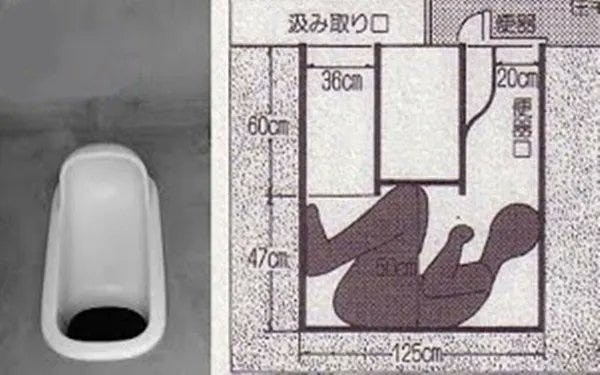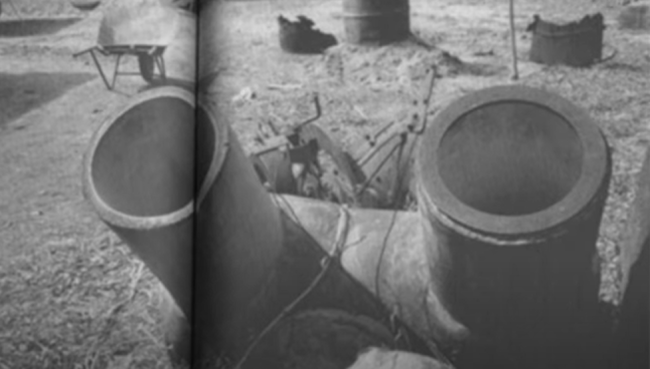On February 28, 1989, the quiet village of Miyakojimura in Fukushima Prefecture was the scene of one of the most mysterious and bizarre cases in Japanese history. Naoyuki Kanno, a young employee of a nuclear power plant in Fukushima, was found dead in extremely bizarre circumstances inside a toilet drain pipe, sparking a series of theories and suspicions that remain to this day.
Table of Content
Stuck in the septic tank
That afternoon, a 23-year-old elementary school teacher named Yumi Tanaka came across a terrifying sight: a human shoe inside the toilet. Desperate and frightened, she immediately called other colleagues and the local authorities.
When the rescue team arrived on the scene, they faced an unexpected challenge. Kanno's body was stuck horizontally inside the toilet, which was only 107 centimeters high, while Kanno's body measured around 120 centimeters. The narrow space and the unusual position of the body made it impossible to remove it without dismantling the entire bathroom.
The autopsy carried out on Kanno's body revealed that he had died of hypothermia, as it was very cold at the time. The oddity of the case, however, was the absence of any marks of violence or injury on the body. How could a 26-year-old man, known for his reputation for being diligent and honest, have ended up in such a bizarre situation?

Difficulties in solving the case
The local police in Fukushima struggled to understand how and why Kanno had entered the bathroom in such an unusual way. There were no signs of a struggle or indications that he had been forced in. However, the circumstances raised important questions: Kanno was almost naked, which suggested that he might have been placed there on purpose, perhaps as part of a cover-up.
Another strange fact is the simple fact that one of his shoes was thrown next to his vehicle. It seems unfeasible that he would have purposely walked into a sewer pipe either to commit suicide or to spy on the teacher, given that the day he entered was a national holiday due to the death of the emperor.
What was the bathroom like at the time?
Toilets at that time, especially in rural areas like Miyakoji, were very different from modern toilets. They consisted of a simple structure with a hole in the ground. Below this hole was a U-shaped pit made of concrete, where waste would accumulate.
These tanks had no modern plumbing, and the process of removing the waste was manual. In Naoyuki Kanno's case, the septic tank was about 107 centimeters high, an extremely cramped and claustrophobic space. The U-shape of the structure made any movement even more difficult, making it almost impossible to get out without help.

Theories and Rumors
Despite the lack of concrete evidence, several theories have emerged about what might have happened to Kanno. Some locals believed that Kanno, who was known for his strong sense of justice, might have discovered something he shouldn't have, perhaps related to illegal activities or irregularities at the power plant where he worked.
Some suggested that he might have been murdered by powerful individuals who feared he would reveal compromising secrets. Other rumors pointed to possible illegal connections between suspected groups and the local police, who had deliberately let the case go cold.
One of the most controversial and shady theories circulating among the residents of Miyakojimura is the possibility that Naoyuki Kanno went into the bathroom to spy on the teacher who was a friend. This theory doesn't make sense precisely because the two were friends, and on the national holiday he wouldn't have been able to spy.
Another theory is that the teacher murdered him because she was being persecuted. All these theories were dismissed due to lack of evidence and the mystery continues to this day.
Closing the Case
After years of investigation without definitive answers, the Fukushima police closed the case in 2004, when the statute of limitations was reached, classifying Kanno's death as "accidental". However, many in the community continue to believe that the truth about what happened to Naoyuki Kanno was never really discovered.
The case of Naoyuki Kanno remains one of Japan's most disturbing mysteries. The strange and tragic death of this young worker continues to fuel discussions and theories, reminding us that, in some cases, the truth can be harder to reach than it seems. The shadow of this mystery still hangs over Miyakoji Village, leaving a legacy of unanswered questions and a community that continues to wonder what really happened on that fateful day in 1989.
